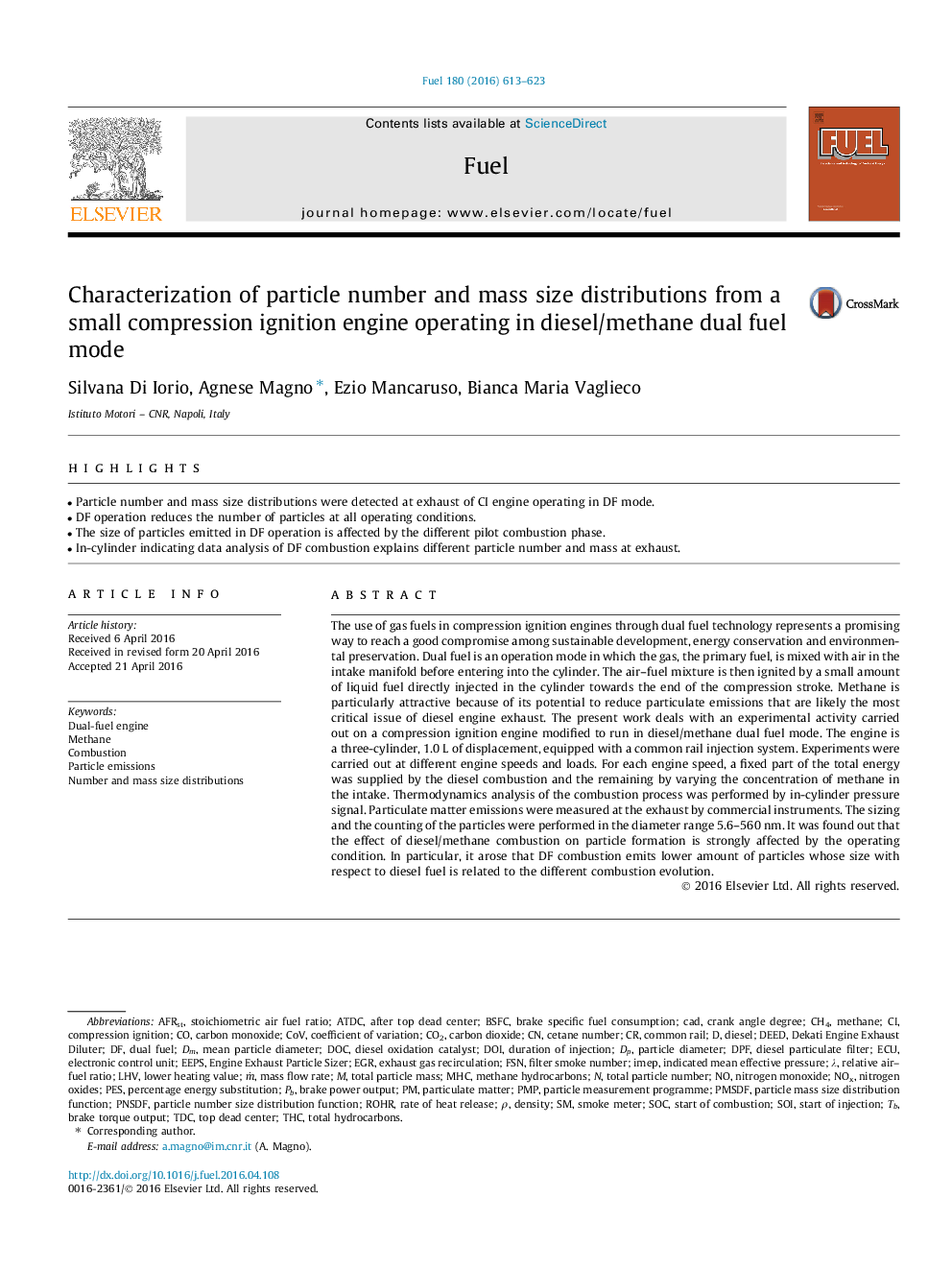| Article ID | Journal | Published Year | Pages | File Type |
|---|---|---|---|---|
| 6633867 | Fuel | 2016 | 11 Pages |
Abstract
The use of gas fuels in compression ignition engines through dual fuel technology represents a promising way to reach a good compromise among sustainable development, energy conservation and environmental preservation. Dual fuel is an operation mode in which the gas, the primary fuel, is mixed with air in the intake manifold before entering into the cylinder. The air-fuel mixture is then ignited by a small amount of liquid fuel directly injected in the cylinder towards the end of the compression stroke. Methane is particularly attractive because of its potential to reduce particulate emissions that are likely the most critical issue of diesel engine exhaust. The present work deals with an experimental activity carried out on a compression ignition engine modified to run in diesel/methane dual fuel mode. The engine is a three-cylinder, 1.0Â L of displacement, equipped with a common rail injection system. Experiments were carried out at different engine speeds and loads. For each engine speed, a fixed part of the total energy was supplied by the diesel combustion and the remaining by varying the concentration of methane in the intake. Thermodynamics analysis of the combustion process was performed by in-cylinder pressure signal. Particulate matter emissions were measured at the exhaust by commercial instruments. The sizing and the counting of the particles were performed in the diameter range 5.6-560Â nm. It was found out that the effect of diesel/methane combustion on particle formation is strongly affected by the operating condition. In particular, it arose that DF combustion emits lower amount of particles whose size with respect to diesel fuel is related to the different combustion evolution.
Keywords
ṁBSFCECUDOCCH4aTDCTDCLHVPMPTHCIMEPEGRDPFSOIPESDOIFSNduration of injectionNOxCOVCombustioncompression ignitionlower heating valueParticle emissionsNitrogen oxidesafter top dead centerbrake specific fuel consumptionCetane numberMass flow ratecrank angle degreeDual fuelDieselCarbon dioxideparticulate matterCommon RailRoHREngine exhaust particle sizerSOCStart of combustionStart of injectionFilter Smoke NumberCoefficient of VariationCADDiesel particulate filterParticle diameterMethaneMHCtop dead centerNitrogen monoxidecarbon monoxideDual-fuel engineRate of heat releaseIndicated mean effective pressureelectronic control unitDensitydiesel oxidation catalystCO2Total hydrocarbonsexhaust gas recirculationEEPS
Related Topics
Physical Sciences and Engineering
Chemical Engineering
Chemical Engineering (General)
Authors
Silvana Di Iorio, Agnese Magno, Ezio Mancaruso, Bianca Maria Vaglieco,
